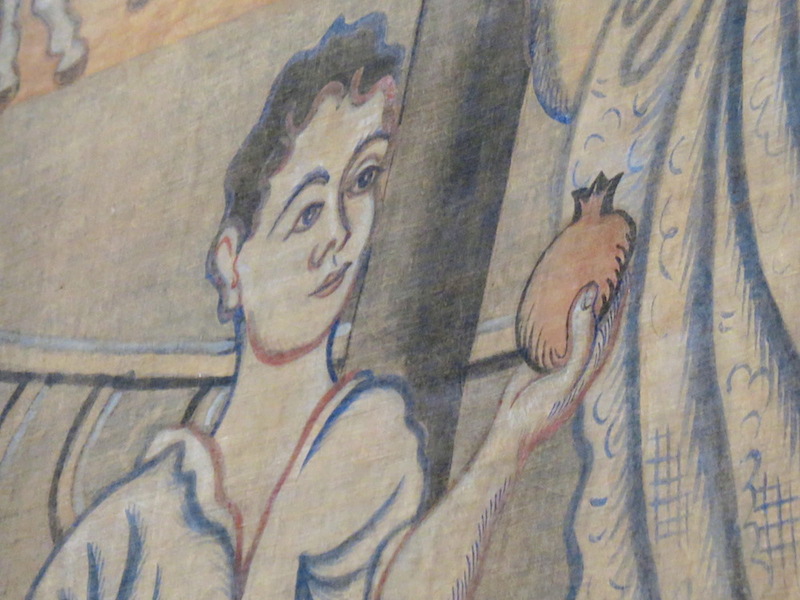New York has always been a trove of hidden treasures. For more than half a century one of the city’s most beloved shrines was a somewhat concealed passageway known to cognoscenti as “Picasso Alley.”
There in the corridor between the Grill Room and the Pool Room at the landmark Four Seasons Restaurant in the Seagram Building in midtown hung one of the most important works by the Spanish-born, French artist Pablo Picasso: the painted theater curtain known as Le Tricorne.

Detail of “Le Tricorne,” Pablo Picasso, Curtain for the Ballet “Le Tricorne,” 1919. Tempera on canvas, ca. 20 x 19 feet. New-York Historical Society, Gift of New York Landmarks Conservancy, Courtesy of Vivendi Universal, 2014.19. © 2015 Estate of Pablo Picasso / Artists Rights Society (ARS) New York
Believed to be the largest painting by Picasso in the United States, the 20’ x 19’ theater curtain was originally commissioned for the ballet Le Tricorne (1919) by the impresario Serge Diaghilev for his avant-garde, Paris-based Ballets Russes, the most influential ballet company of the early 20th century.
Acquired in 1957 by the architectural historian, Phyllis Lambert, Le Tricorne was gifted to the New York Landmarks Conservancy in 2005—and, thereafter, donated to the New-York Historical Society where it now receives pride of place in Dexter Hall as the centerpiece of a brilliant exhibition devoted to its illustrious provenance.
Painted over a period of three weeks in London in 1919, Picasso created the curtain for Le Tricorne by working with paintbrushes affixed to broom handles, as well as toothbrushes. He and Diaghilev’s scene painter Vladimir Polunin and his wife Elizabeth Violet wore slippers to stand on the canvas as they painted.
Curated by Dr. Roberta J.M. Olson, New-York Historical Society’s Curator of Drawings, the exhibition Picasso’s “Le Tricorne” features works by American artists who were Picasso’s contemporaries, many of whom participated in the 1913 Armory Show. The exhibition, which will remain open through summer 2016, examines European and American traditions of Le Tricorne’s era, including works by artists such as George Bellows, El Greco, Francisco de Goya, Childe Hassam, Elie Nadelman, Maurice Prendergast, John Sloan, and others. Ballet objects and two recently rediscovered tapestries (one from the reign of Louis XIV and one from the 1939 New York World’s Fair) enrich the historical offerings.
“Le Tricorne has been an icon of New York for more than half a century, embodying both an influential social milieu and an important moment in the city’s cultural development,” said Louise Mirrer, President and CEO of the New-York Historical Society. “We are proud to welcome the work into our permanent collection.” The first work by Picasso in the collection of the New-York Historical Society, Le Tricorne will remain on long-term view.



























